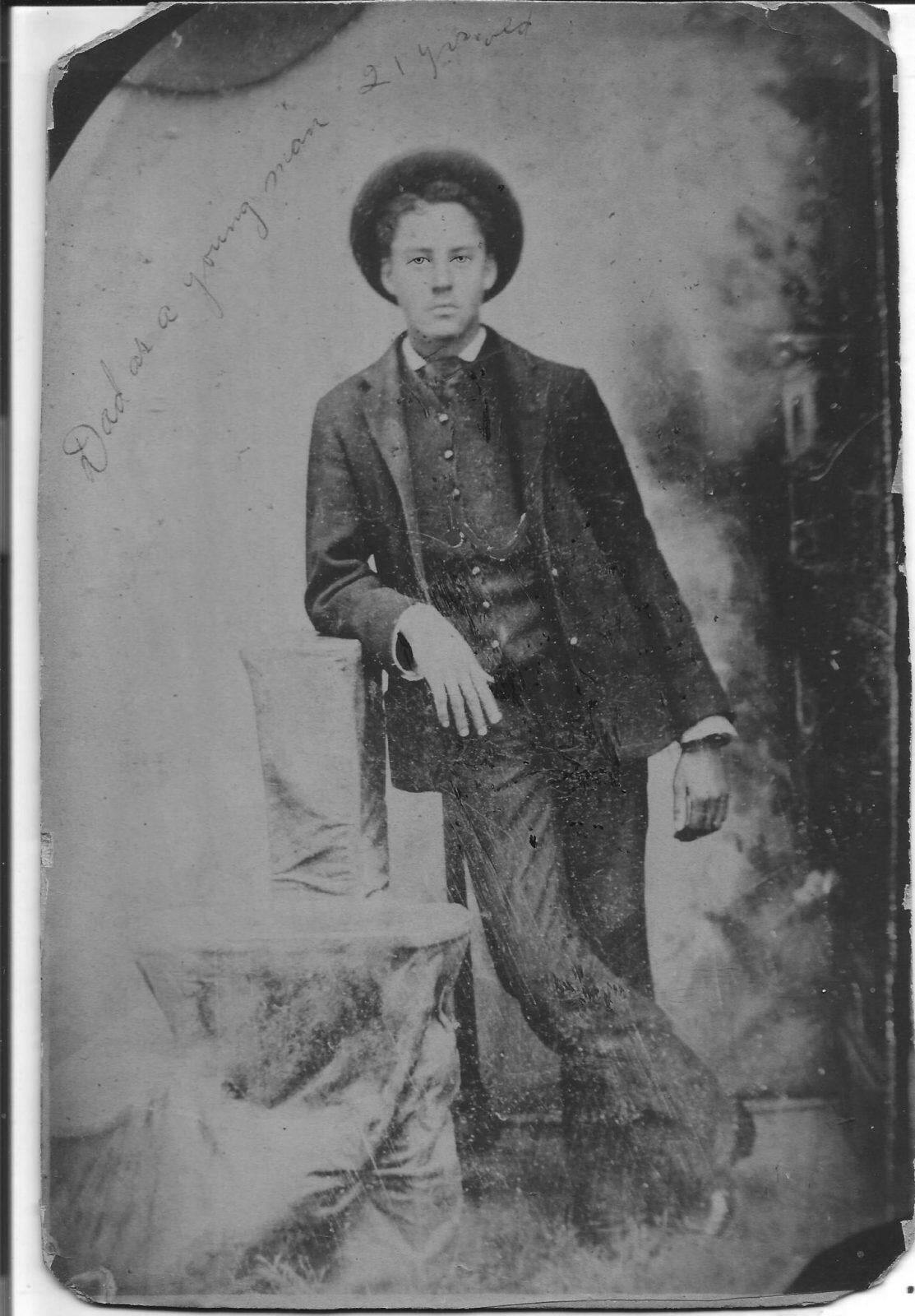
Among the treasures of the Sedalia Ragtime Archive are sections of G. Thomas Ireland’s old clarinets. Though Sedalia ragtime is usually associated with Scott Joplin, Arthur Marshall, Scott Hayden and Brunson Campbell, Tom Ireland deserves his place among that panoply of ragtime greats. Let me explain for those unacquainted with this Sedalia legend.
Unlike the other Sedalia ragtime personalities, “Tom” Ireland, as he was affectionately known around town for 95 of his 97 years, lived and stayed in Sedalia from 1868 to 1963. During his career he worked for all the many local newspapers and even edited and possibly owned a short lived paper for African-Americans, The Western World, in the 1890s. Tom was active in Republican politics for his first 60 years. As his mother often reminded him, he had been born only a few days after slaves had been freed by the Republicans and their Reconstruction Amendments. However, I must note that Tom defected to the Democratic Party during the Depression and became an FDR Democrat despite his loyalty to Mr. Lincoln and the Reconstruction.
The Irelands had two sons and lived comfortably, albeit modestly, on Sedalia’s Northside. Before I finally get to my titled subject, however, I must add a very important observation. Sedalia was and to an unfortunate degree is still a community with deep racial tensions. This was never more true than in G. Thomas Ireland’s lifetime though many have mentioned that the ragtime musicians often received somewhat better treatment.
However, as I followed his years through the accounts of others and the many instances when he was mentioned in newspaper articles, I discovered Tom Ireland grew to have a unique standing around town. I was living in Sedalia shortly after he died and I can attest to that respect as I saw it often displayed when his name was mentioned.
Harriet Janis and Rudi Blesh revealed a tiny discovery they published in They All Played Ragtime, pages 20-21, that seems minor but clearly illustrates that respect.
“The affection of white Sedalia for this erect, wiry, alert old gentleman, is succinctly expressed in the current city directory (1949) in which after the name of G. Thomas Ireland the obnoxious customary word ‘colored’ with its implication of segregation, is conspicuously absent.”
To tell the story of Ireland’s musical prowess, however, I will defer to Tom’s partial clarinet cylinders his daughter donated to the Archive in 1978. To badly juxtapose a popular Theodore Geisel title…Oh the places they had been! I once drafted an as yet unfinished monograph personifying Tom Ireland’s old clarinet imagining it mingling among the keyboards and cornets of Scott Joplin and the other ragtime innovators. It was quite a ragtime adventure.
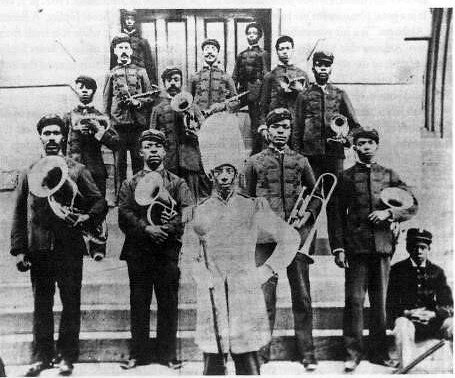
It is very possible that Ireland began playing the clarinet while he was in the all-Black four-room grade school he attended through the 6th grade. A clarinet also probably went with him to Nashville, Tennessee, where Ireland attended high school and also earned a pre-med degree from Central Tennessee College in the late 1880s thanks to support from his white southern relatives. The musician and his instrument were back in Sedalia by 1891 following the organization of the famous Queen City Concert Band (QCCB). Tom became the group’s solo clarinetist attesting to the fact that he had probably been playing for some time.
The group was popular in the Midwest and locally performed on many occasions including Republican political events where Ireland would have been both performer and elected participant. The popular street fairs of the 1890s that attracted excursion trains from all directions were also frequent venues for the band and they would sashay from booth to booth up and down the street in their smart new uniforms.
In 1893, Ireland and his clarinet would have been in Chicago where the musician paid for his trip to the Columbian Exposition by working in (where else?) a printing office. I also imagine that Ireland played at least outside the fairgrounds, and like Scott Joplin, he probably heard the earliest syncopations woven into piano pieces there.
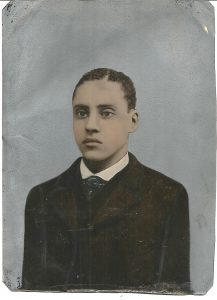 Back in Sedalia by 1894, The Queen City Concert Band was using an upstairs room over the Western World newspaper office where Ireland was editor. They practiced there and used the attic for storage of their instruments and uniforms. The building was destroyed by arson in late 1894 but apparently Tom was keeping his clarinet at home when that happened.
Back in Sedalia by 1894, The Queen City Concert Band was using an upstairs room over the Western World newspaper office where Ireland was editor. They practiced there and used the attic for storage of their instruments and uniforms. The building was destroyed by arson in late 1894 but apparently Tom was keeping his clarinet at home when that happened.
Scott Joplin joined the band, probably in 1896 and from that point on his compositions frequently found their way into the group’s repertoire. Those scores or more likely mere charts would have preceded Joplin’s own Red Back Book publications of 1906 and perhaps even inspired them.
Ireland and his clarinet briefly defected to Joplin’s own six-piece group in the late 1890s but they soon returned to the QCCB. Both his clarinet and Tom barely escaped electrocution in June of 1897 when a lightning bolt struck him and sent him to the doctor. He had been walking home from a band practice with friends when they were knocked down and badly jolted.
The band fell on hard times and 1899 found its members collectively unable to pay a bill for back rent. Their property was seized including Ireland’s clarinet but a group of white citizens stepped in and paid the debt and the instruments were spared the indignity of going to the highest bidder. It is interesting that in the newspaper article Ireland’s instrument was singled out for mention.
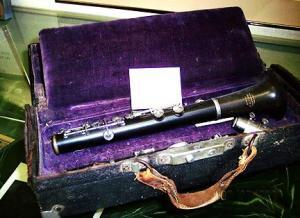 Tom Ireland was involved with a debacle that surrounded the short lived but never the less famous “gentlemen’s” clubs along Main Street or “Battle Row” as it was nicknamed. This included the Black 400 Club and the Maple Leaf Club which was incorporated in 1898 and included Scott Joplin and Arthur Marshall as founding members but did not include Ireland. A series of rowdy events associated with the clubs that broke out onto the streets soon after they were organized led to a citizens group petitioning the mayor to close the clubs in June of 1900. Tom Ireland was a petition signer.
Tom Ireland was involved with a debacle that surrounded the short lived but never the less famous “gentlemen’s” clubs along Main Street or “Battle Row” as it was nicknamed. This included the Black 400 Club and the Maple Leaf Club which was incorporated in 1898 and included Scott Joplin and Arthur Marshall as founding members but did not include Ireland. A series of rowdy events associated with the clubs that broke out onto the streets soon after they were organized led to a citizens group petitioning the mayor to close the clubs in June of 1900. Tom Ireland was a petition signer.
I could spend a lot of ink here discussing this era and the involvement of Joplin, Marshall, and Ireland, including the naming of Joplin’s most famous rag, but I will save my controversial ideas for another dusting.
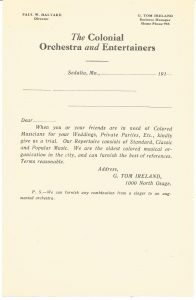 The QCCB and Ireland’s clarinet became part of the DeKreko Brothers Carnival Show and they traveled briefly with the company in 1901. Apparent wanderlust infected Ireland and he next joined Jack Mahara’s Minstrels. That adventure only lasted a few months. Still, it was long enough for Ireland and his clarinet to rub shoulders and barrels with a young W.C. Handy who would have been experimenting with his the blues. Ireland would have probably experimented as well since clarinets can really “bend” those “blue” notes! The two men had met earlier in 1899 while Handy was in Sedalia and Ireland had taken him to the Maple Leaf Club.
The QCCB and Ireland’s clarinet became part of the DeKreko Brothers Carnival Show and they traveled briefly with the company in 1901. Apparent wanderlust infected Ireland and he next joined Jack Mahara’s Minstrels. That adventure only lasted a few months. Still, it was long enough for Ireland and his clarinet to rub shoulders and barrels with a young W.C. Handy who would have been experimenting with his the blues. Ireland would have probably experimented as well since clarinets can really “bend” those “blue” notes! The two men had met earlier in 1899 while Handy was in Sedalia and Ireland had taken him to the Maple Leaf Club.
The legendary ragtime originals left Sedalia around 1900 leaving Tom Ireland and his clarinet to continue playing with the QCCB on every conceivable occasion for a few more years. Tom stayed musically active and he even had his own Colonial Orchestra for a time in the nineteen-teens. It may have been a remnant of the QCCB. His family’s extended trip to visit relatives in California in 1949 is well documented by the scrapbook of that adventure in the Sedalia Archive.
Though he settled down to his “ragtime life,” there were some ominous moments for the aging musician. His newspaper, after all, had been deliberately burned, he had been nearly killed by a lightning strike, a flue fire nearly destroyed his home in 1936, and a bullet shattered his living room window while he was sitting there in 1950.
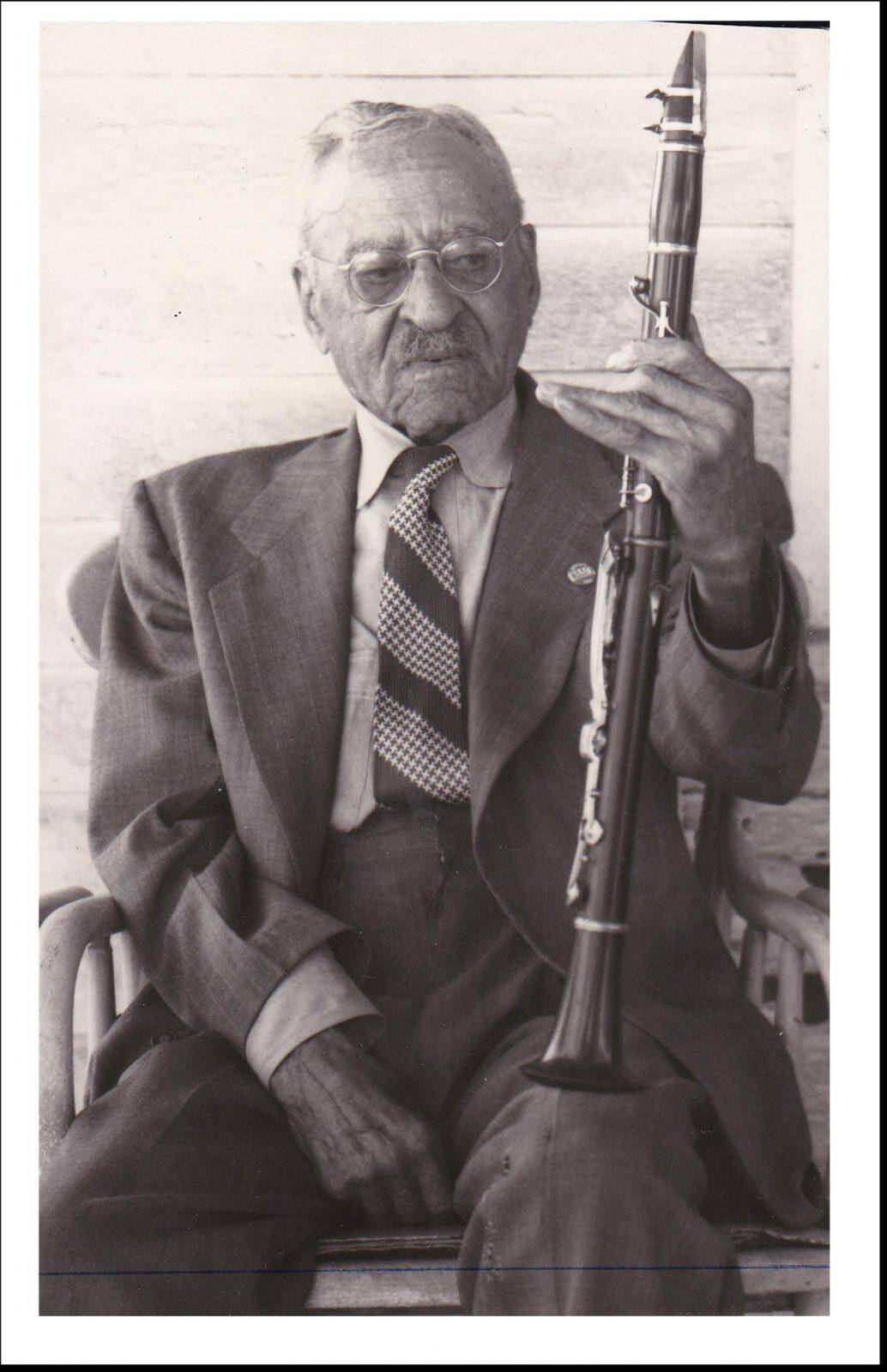
Probably the last time the old musician and his clarinet saw action was during the 1959 and 1960 Scott Joplin Memorial Concerts when Bob Darch brought Ireland and Marshall on stage for some ragtime reminiscence. Tom posed for the famous photograph holding his clarinet.
Tom Ireland’s August 30, 1963 newspaper obituary states that he was the son of the brother of a southern governor and a former slave born just eight days out of bondage. For all that he was a son of Sedalia and he and his clarinet made a major contribution to the ragtime era there. In that obituary, The Sedalia Democrat stated that Tom’s “kaleidoscopic, vigorous, and long life” included, “such wide-ranging roles as shoeshine boy, newspaper pressman, publisher, and worker, medical student, teacher, traveling minstrel, valet, part owner of a saloon, politician, bicyclist of note, store owner, custodian of the Pettis County Court House and Democrat-Capital newspaper, and ragtime musician.”
For more about Tom Ireland and the Clarinet at The Sedalia Ragtime Archive Click HERE
Larry Melton was a founder of the Scott Joplin Ragtime Festival in 1974 and the Sedalia Ragtime Archive in 1976. He was a Sedalia Chamber of Commerce manager before moving on to Union, Missouri where he is currently helping to conserve the Ragtime collection of the Sedalia Heritage Foundation. Write him at lcmelton67@gmail.com.






















